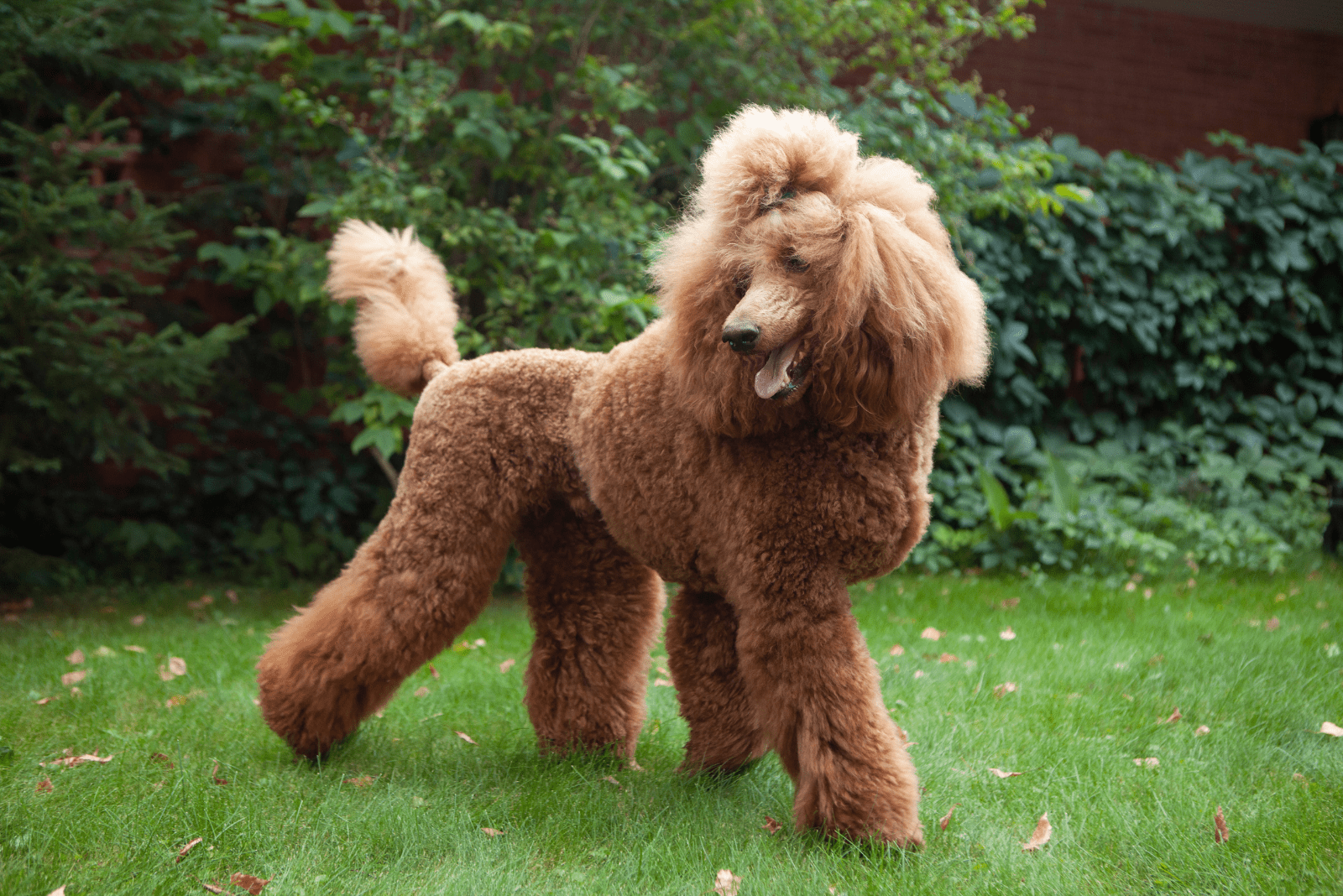Talking about tail docking, especially in breeds that have different showing standards in different countries, is a touchy subject. Animal activists and veterinarians and kennel clubs have opposing stances on docking a dog’s tail, so it is even harder to join a side when you want a simple answer.
I will give you all the facts you need to know for making a decision whether you are for or against Poodle tail docking. What other place to start off than categorizing your requirements into two that best represent the plans you have for your dog.
Is Poodle Tail Docking Necessary Or Not?
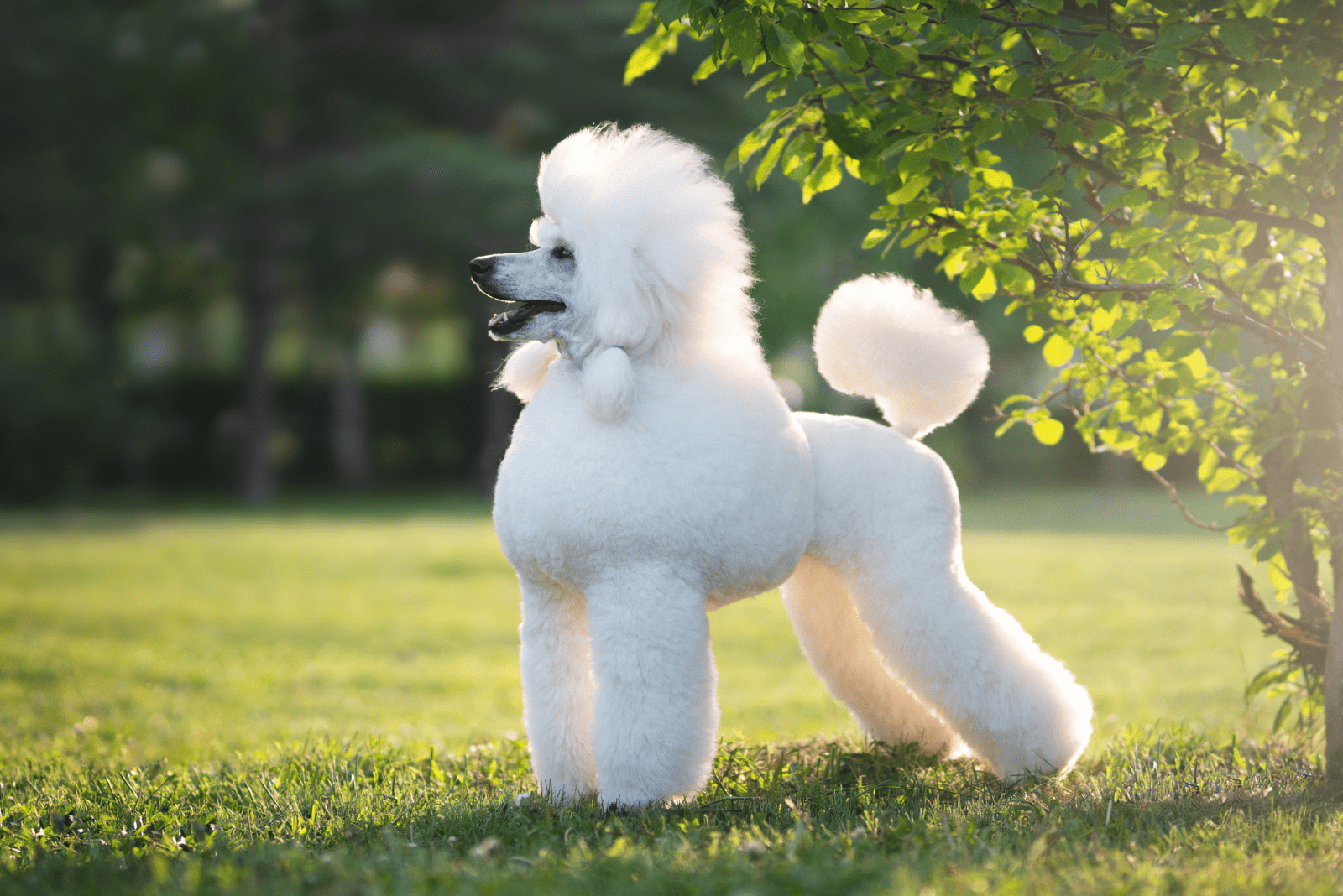
The first division line on the topic is between biology and human imposed dog standards. What can be a necessity for one, can be cruel for another, and it mainly revolves around your views of what is right or wrong.
From a biological aspect, tail docking is clearly not necessary. Evolution is a no nonsense phenomenon that adapted dog features to the environment. We can talk about evolution in the context of Poodles simply because they are purebred dogs.
Poodle owners are certainly aware of the fact that, medically, there is no reason to shorten your dog’s tail. A Poodle’s tail is not a body part that hinders its movement or that affects their “societal” role. Tail shortening can be medically viable if there is a health problem specifically related to it.
If you are a dog owner who wants to show their dog at dog shows and participate in competitions, then you will have a valid reason to dock your Poodle’s tail.
There are many Poodle owners who do personally do not approve of tail docking but still do it to conform to the AKC rules.
However, docking a Poodle’s tail has recently been made optional by the AKC. Poodle owners on poodle related forums write that the chances of winning with an undocked Poodle are rather low, and that, if you are in it for the trophy, you will probably decide to dock your dog’s tail.
The Ethics VS Morals Of Tail Docking
Is docking a dog’s tail cruel? If done without practical reason, I would say yes. Discerning between cruel or not is a matter of personal preference while deciding whether the rules within kennel clubs concerning tail docking are cruel is an ethical dilemma.
So, objectively, you would be right in saying that tail docking is cruel from a general perspective. However, kennel clubs such as the AKC or CKC had to create rules in order to level the playing field.
By participating in their competitions or registering your dogs to have AKC recognition, you immediately exit the general perspective space and join the space where AKC rules overrule your take on the matter. I guess that is the price we pay for joining any type of collective.
Historical Reasons For Tail Docking
1. Slows The Spread Of Rabies
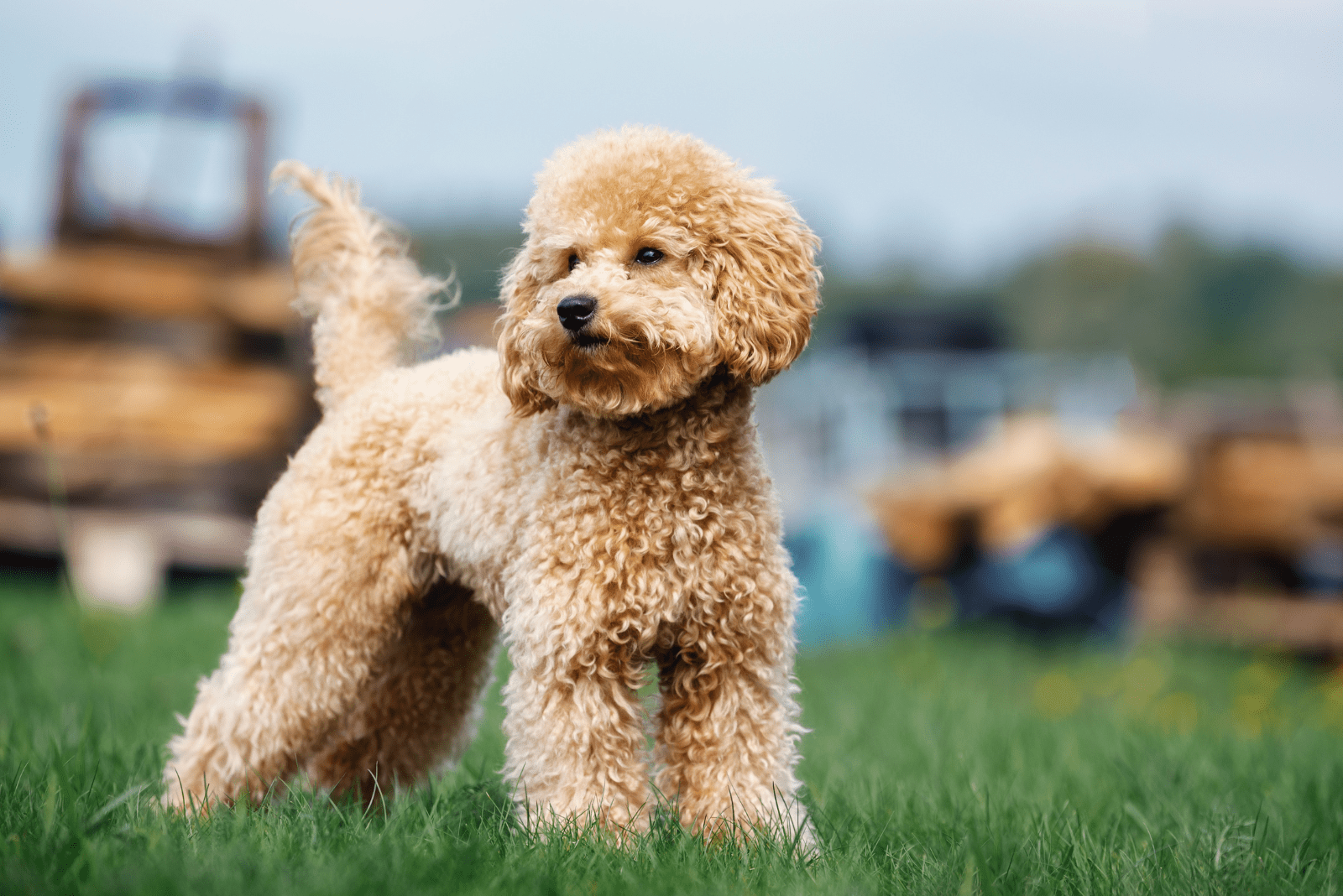
Every sentence starting with “Ancient Romans…” will either take a turn for the grotesque or make you wow. This time, it lands closer to the grotesque. Ancient Romans docked dog’s tails due to the belief that it would slow down the spread of rabies.
This belief was shattered with the advancement of animal medicine and is now considered nonsense. Rabies had nothing to do with the tail, and even if it did, any part of the body would have been a prime candidate for removal since it is spread through saliva.
2. Citizen Status And Game Hunting Participation
Whether Ancient Roman or medieval times, only citizens of high status could hunt game. Though there are many breeds that were more adept at chasing game than Poodles, they were nonetheless used for equal or similar purposes.
Cutting or docking the dog’s tail was performed on dogs that belonged to lower classes of citizens to prevent them from hunting. The dog’s agility was believed to be severely impacted with a shorter tail which impeded them from being efficient in cutting corners quickly and running fast.
3. Reduces The Chance Of Tail Injury In Hunting Dogs
Many dog breeds, including the Poodle, had the role of retrievers or as water dogs. The landscape in which these dogs performed their duties was often full of thorny bushes and low vegetation that their tail could get tangled in.
While this had a practical purpose back when dogs had that kind of job, the practice is now considered obsolete by veterinarians and veterinary medical associations.
The American Veterinary Medical Association (AVMA) advocates against tail docking and ear cropping for cosmetic purposes.
4. Natural Tails Slow Poodles Down In The Water
Retrieving water fowl was the most popular role of the Poodle. Germans used them as retriever dogs when hunting ducks and thought that the puffy, full tail lowered their swimming speed. To avoid this from happening they simply shortened their tails.
The logic of this problem and solution is plausible, but the gains in speed could not have been that great as to increase the swimming speed by a substantial amount. That is why you do not dock a speed boat’s tail.
5. Improving The “Beauty” Of The Dog
Cosmetic reasons for Poodle tail docking are rooted in books on dogs as far back as the mid nineteenth century. Some dog guide books from the period mention tail docking as a requirement for hunting dogs.
Another, more superficial, reason is subtly embedded in the literature. It is quite clear people preferred a particular Poodle look over the “stock” one. This paved the way for conformation rules in some kennel clubs like the AKC.
The American Kennel Club Breed Standards
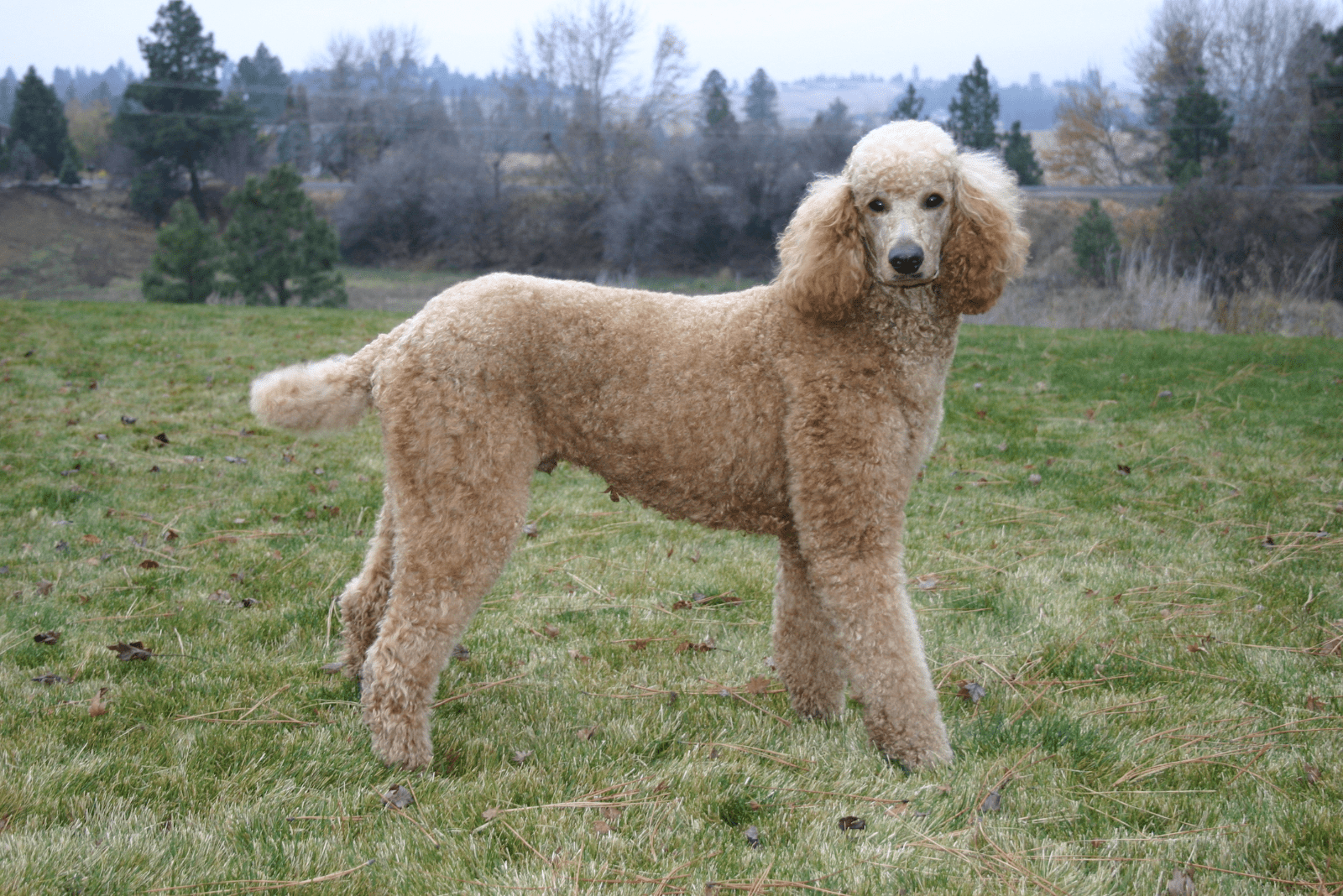
Since its founding days in 1884, the American Kennel Club has been the most authoritative organization on all things dog. Their constant adding of amendments and improving the workings of club administration saw them expand very quickly across the US.
Other than the creation of the Constitution and Bylaws and Dog Show Rules in 1884, perhaps the most important milestone in AKC’s history (for this topic) was the 1929 Pure-Bred Dogs book.
In 1938, the name was changed to The Complete Dog Book to better represent the comprehensiveness of the topic. It included all the 153 dog breeds that were recognized at that point, breed standards, breed history, photos and training tips.
Since it was among the most sold books of the period, all dog owners who wanted to show their dogs vehemently followed the rules outlined in it. Naturally, the need to be part of the AKC community was given priority over the morals of cutting a dog’s tail.
Poodle Breed Standards According To The AKC
The Complete Dog Book states that a standard Poodle should have the tail “docked of sufficient length to insure a balanced outline.” It also makes clear that the tail should not be curled or hanging over the back.
Proportions were, and still are, a big deal in AKC’s books (no pun intended). The type of Poodle was also important in determining how much tail was to be removed.
A Miniature Poodle would then need to undergo a surgical procedure for a couple of centimeters simply to conform to the “rule of proportions”. What about the Toy Poodle then? Do you see my point?
The rules now are a little more lax and an undocked tail is allowed, but that Poodle’s chances of winning the show are very low. If a Poodle has a long tail that is not erect and ending in a point, it is considered a major fault by the judges.
In the next chapter, you will see how this was elegantly sorted out in the United Kingdom without any backlash and negligible negative feedback.
The American Veterinary Medical Association’s efforts to educate pet owners and push for a ban on tail docking and ear cropping was not well received by the American Kennel Club. The AKC’s stance on these issues was one of disappointment for not being included in the discussion.
Their (AKC) perspective on these issues is one of preserving tradition and history of certain breeds. It is their prerogative that looking a certain way makes a breed unique despite the fact that the “uniqueness” involves body alteration conceived and performed by humans.
Advantages Of Keeping A Puppy’s Tail
There are a few reasons to keep your dog’s tail intact. One would be just because it was born that way. A tail is not a handicap, on the contrary, it gives the dog the ability to compensate for uneven weight distribution while changing directions during activity.
If you ever saw your dog chase a squirrel or small critter around the yard or in the park, chances are you saw it use the tail as a rudder. If it were not for the tail, the dog would have lowered agility at high speeds.
Poodles are known for their athleticism and excel at sport competitions. A tail will go a long way in those too, so keep it attached to your sporting companion.
On Doodles, Poms, Shih Tzus and other mixed breeds the tail is part of the aesthetic and removing a part of it would defeat part of the purpose why they were bred.
Another useful trait of a dog’s tail is expression. Whether communicating with you or other dogs, it is a crucial part of conveying information about mood. If something is wrong with a dog, the first sign they give you involves the tail. It helps you quickly read the mental state of the dog.
What Are The Benefits Of Docking A Poodle’s Tail?
We cannot talk about benefits in medical terms. Tail docking is medically approved if conditions such as tumor, tail injury, bone malformation etc. occur and the surgery is necessary for the dog’s health and normal quality of life.
Another common misinformation about docking tails is tail hygiene. Some believe that Poodle tails get dirtier due to the very long coat and therefore are more prone to infections. This is simply untrue and can be easily fixed by grooming your Poodle regularly.
However, there are benefits of docking your Poodle’s tail if you wish to participate in AKC conformation events. If your Poodle has a longer tail but otherwise perfect physical features and temperament, then docking the tail will give you that advantage to bring the trophy home.
The Legal Side Of Poodle Tail Docking
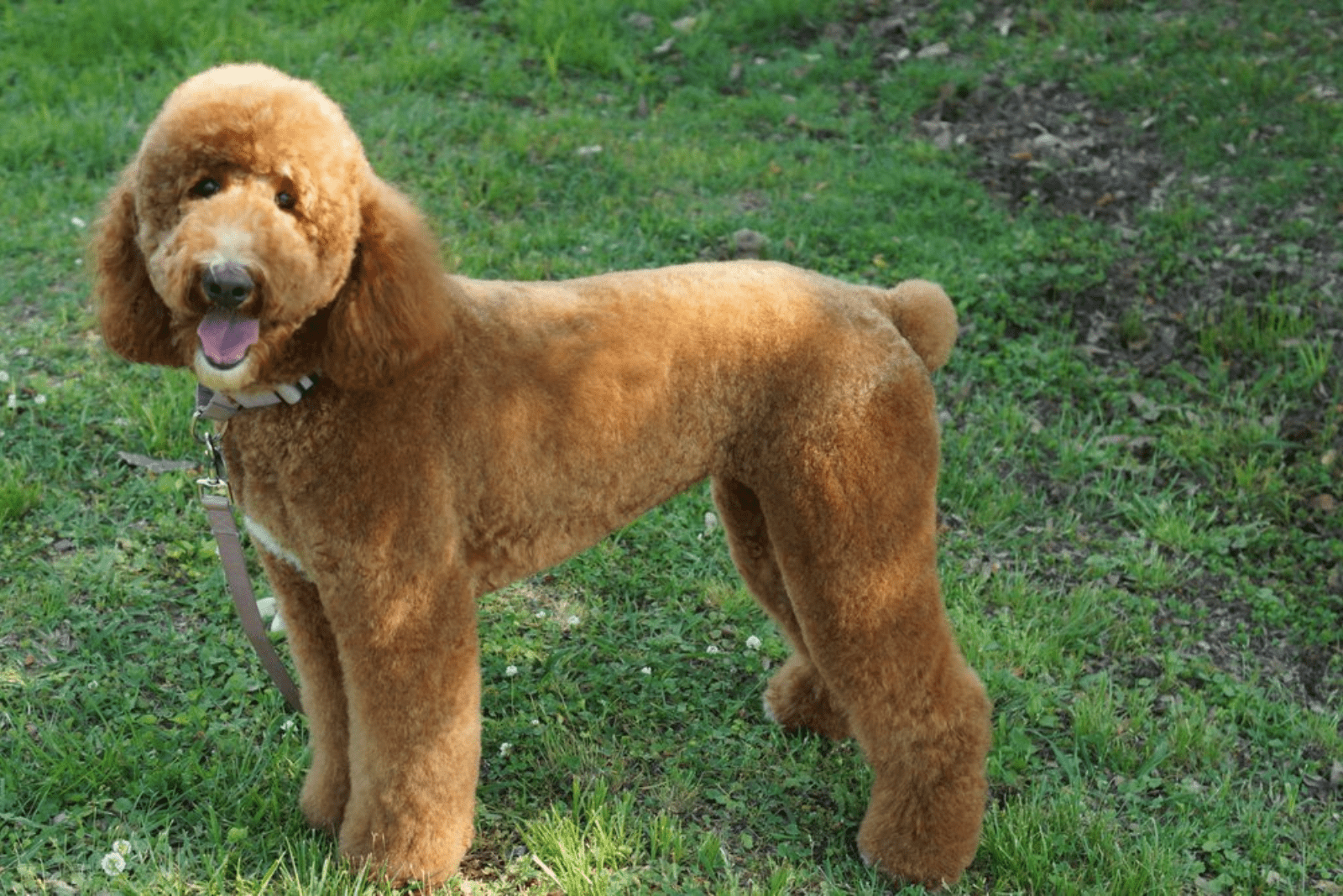
United Kingdom legislation sees tail docking as mutilation and it has been banned for a while now in England, Wales, Northern Ireland and Scotland (only to be partially reversed by the Scottish MP in 2017).
The breed standards were accordingly changed to follow legislation rules. So, if you fancy your Poodle with a tail, you will have a great time winning shows over in Europe.
The United States is a different story. Only Pennsylvania and Maryland have provisions regarding tail docking that allow tail docking only after the puppy can be safely anesthetized so that the procedure does not cause pain.
Tail docking is only prohibited from the age of five days to twelve weeks, except for medical reasons. So, in essence, tail docking is not banned but simply conditioned by the puppy’s age.
The provisions in Maryland stipulate that docking can be only performed by licensed veterinarians and in an appropriate way, conducive to the procedure’s standards. This only removes the right of breeders to perform the docking themselves, and puts the burden of the decision on the owner.
Procedures such as tail docking, ear cropping and dewclaw removal are allowed in Alaska, Louisiana, and West Virginia only if done by a veterinarian and in sterile conditions that will not endanger the safety of the animal.
However, these provisions help lower the number of breeders who perform tail docking prior to the customer expressing their wishes on the matter. The trend of docking the puppies at the age of a couple of days is falling nowadays thanks to provisions and dog buyer education.
Poodle Tail Docking Procedure Bit By Bit
Surgical Procedure

Surgical procedures on pets can sometimes be difficult both in terms of pain management and mental trauma caused by the pain. There are two types of tail docking in dogs: surgical and banding.
A surgical procedure to remove part of the tail includes cutting off a portion of vertebrae towards the end of the spinal cord (yes, the tail is part of the spinal cord). Some working dog breeds like the Rottweiler have their tail almost completely cut off so that it looks like a short tail.
A Poodle puppy usually goes through the procedure before the twelfth week and without anesthesia. Usually, the docking is performed a few days after birth.
The puppy’s body frailness cannot handle anesthetics properly and it would probably die simply because of the anesthesia. Many argue that the puppy will not remember the trauma and pain caused by this procedure but veterinarians advise a small dosage of local anesthetic.
The separation of the vertebrae and surrounding tissue is usually performed with a scalpel. After that, the wound is closed by suturing the skin that is left around the “new” point of the tail.
For standard, mini and toy Poodles, the tail retains half to two thirds of the original tail’s length. Individual dogs can have tails of different lengths so it can vary from one dog to another.
If you were to follow AKC guidelines, the tail tip on a Poodle should be erect and in the same level as the dog’s top of the head. Different breeds, of course, can have different proportions and, inherently, various docking variations.
Methods such as laser or electrosurgery are also available. Their downside is the price, but the recovery period is significantly shorter with lower levels of post-op pain.
What Is Banding?
Banding is a method of tail docking that involves putting a surgical rubber band at the desired tail length and completely constricting blood flow in the tail.
As the blood carrying nutrients cannot reach the segmented part of the tail, the segment will fall off due to the tissue inside it dying. This procedure is possible only on puppies. Adult dogs would remove the band or cause damage trying to remove it.
Surgical removal is preferred over this method because it takes a while for the tail bit to fall off, whereas surgery is quick and immediately followed by recovery.
Problems Tail Docking Can Cause
No surgery is without potential complications. Tail docking is no exception. Some of the most common conditions that can develop after tail docking or occur during surgery are necrosis, infection, excessive bleeding, neuromas and phantom limb pain.
Put simply, necrosis is tissue rotting. Necrosis can spread and infect the dog’s nervous system, causing potentially fatal conditions.
Infection will occur if the wound was not properly sterilized or closed or if post-op care was not adequate.
Excessive bleeding can occur if the dog has issues with blood coagulation or if the veterinarian creates an incision larger than necessary.
Neuromas are growths on the amputated part of the tail that occur in random formations and follow no regular pattern. This condition most often occurs after tail docking and can be caused by the puppy’s determination to “fix” the wound. Neuromas are surgically removed.
Although a portion of the tail was removed, the dog’s nervous system can send phantom signals to the brain. This causes chronic pain that usually disrupts the dog’s daily activities. There is no cure for phantom pain and the only way to subside the pain are NSAIDs.
Many dog owners and breeders that have both Poodles with docked and undocked tails claim to have noticed some behavioral changes that affect the dog’s confidence while socializing. This can be attributed to the dog’s reduced ability to express itself and be understood by other dogs.
Another common occurrence with tail docking is partial or full removal of the supracaudal gland. In most dogs, this gland is located above the ninth vertebra. The primary role of this organ is the secretion of liquids that help intraspecies communication.
Not all dogs have this organ and in some it is located on lower vertebrae closer to the body, therefore remaining unaffected by tail docking.
How Much Does It Cost To Dock A Poodle’s Tail?
If performed while the Poodle is a puppy it can be as low as $10 and, usually, does not go over $35. The surgery is much more complicated if the dog is older. You can expect to pay between $200 and $500 for an adult dog.
The cost is high due to the amount of lab tests, anesthesia, more work for the veterinarian and more aftercare needs. Laser or electrosurgery will cost many times more and might not be available where you live. If you do have access and money for it, it is a better choice.
Surgery Aftercare
Caring for a dog after tail docking can be difficult or easy. If the docking was performed a few days after birth, then there will not be much aftercare as the wound heals within a week. Your puppy might be in pain though so make sure to provide comfort to it.
For adult dogs it is important to use an e-collar to avoid chewing and biting the tail. Your dog might rip the sutures and cause the wound to bleed. This means the veterinarian will have to use general anesthesia again to close up the wound.
Always monitor the wound. Do not touch scabs if they form. Call your vet for advice on what to do if the scabs are large and could accidentally fall off due to the dog moving.
Keep an eye out for infection. The symptoms will most likely be swelling and some kind of white or yellowish discharge. If this is the case, call your veterinarian or get your dog to an animal hospital.
Clean the wound every day. Dogs love to get dirty and that makes bacteria lying in wait go for the tail. You can use sterile gauze or bandages to keep the tail clean.
Do not leave your dog unattended if you put a bandage on the wound because it will probably take it off and open the wound in the process. Arm yourself with patience for a couple of weeks.
The DVM might prescribe some pain medications. Usually, it is some over the counter NSAID. Sutures are usually removed two weeks after the procedure. The veterinarian will assess the state of the wound and either remove the sutures or prolong recovery.
Tail Of The Tale
Poodle tail docking is all about owner choice. The purpose you got your Poodle for will determine what you do with the tail. If you are looking to participate in AKC conformity events, then you almost certainly need to dock the tail if you aim to win.
If you are buying the Poodle as a pet, then there is no practical reason or advantage of docking its tail. If you really want that breed standard aesthetic without going to dog shows, then you might see it as reason enough to go through with the surgery.
My advice is to leave your Poodle’s tail undocked. Why? Because winning a trophy will mean nothing to the dog. Competition is purely a human trait. Dogs’ motivation mainly rests within their desire to please their owner.
If you researched this topic prior to getting a Poodle, then I think you will agree with me. Those who want to show their dogs probably decide before ever acquiring a dog.
Finally, your choices are your own, and your dog will love and respect you if you treat it well regardless of tail length. I hope this article provided you with enough information to put this decision to bed.
Until the next one. Keep Poodling.
Read Next:
• Happy Tail Syndrome: What Is It And Should You Be Concerned?
• Bald Poodle: Explanation And Useful Advice On How To Help
• 10 Reasons Why Poodles Are The Worst
